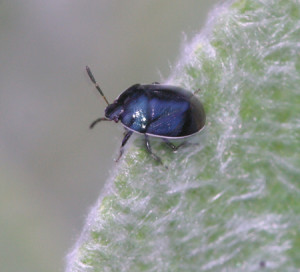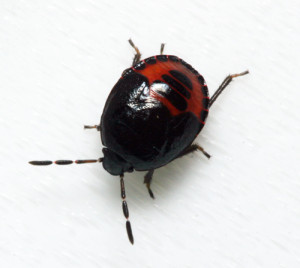Sehirus cinctus (see HERE us SINK tuss) is usually an obscure little bug, bothering nobody and noticed by few humans. The past week, however, I’ve received several inquiries about thousands of little black “beetles” (actually bugs) crawling over lawns, driveways and even dogs. Also known as the white-margined burrowing bug, Sehirus cinctus is an example of one of those insects that can go along for years unnoticed, then all of a sudden, BOOM. They’re everywhere.
Sehirus is particularly interesting for its behavior. The adults and nymphs feed on the seeds of nettles and plants in the mint family. The adults lay their eggs in the soil and then do something unusual for an insect. They exhibit maternal care for their young. They are good mothers!
After feeding on mint seeds themselves, the adults dig shallow burrows and oviposit between 120 and 150 eggs next to the seeds. The proceed to guard their brood and bring more seeds as needed for 1-3 days after hatching. In Texas, host plants are thought to include horsemint, and henbit. I also see the adults on lamb’s ear later in the spring.
The nymphs seen now above ground have grown beyond the helpless stage and are foraging on their own. The fact that each female lays a clutch of up to 150 eggs and may have two broods explains how their numbers can increase so quickly.
Sehirus is not an insect to be feared. It doesn’t bite. It won’t damage your garden plants (though it might help control the spread of the henbit in your yard). If it seems like a nuisance, be patient. Its numbers will subside shortly, and it may be years before you notice them again. So if you see one this week, give it a smile and a tip of the hat. After all, this weekend is Mother’s Day.

